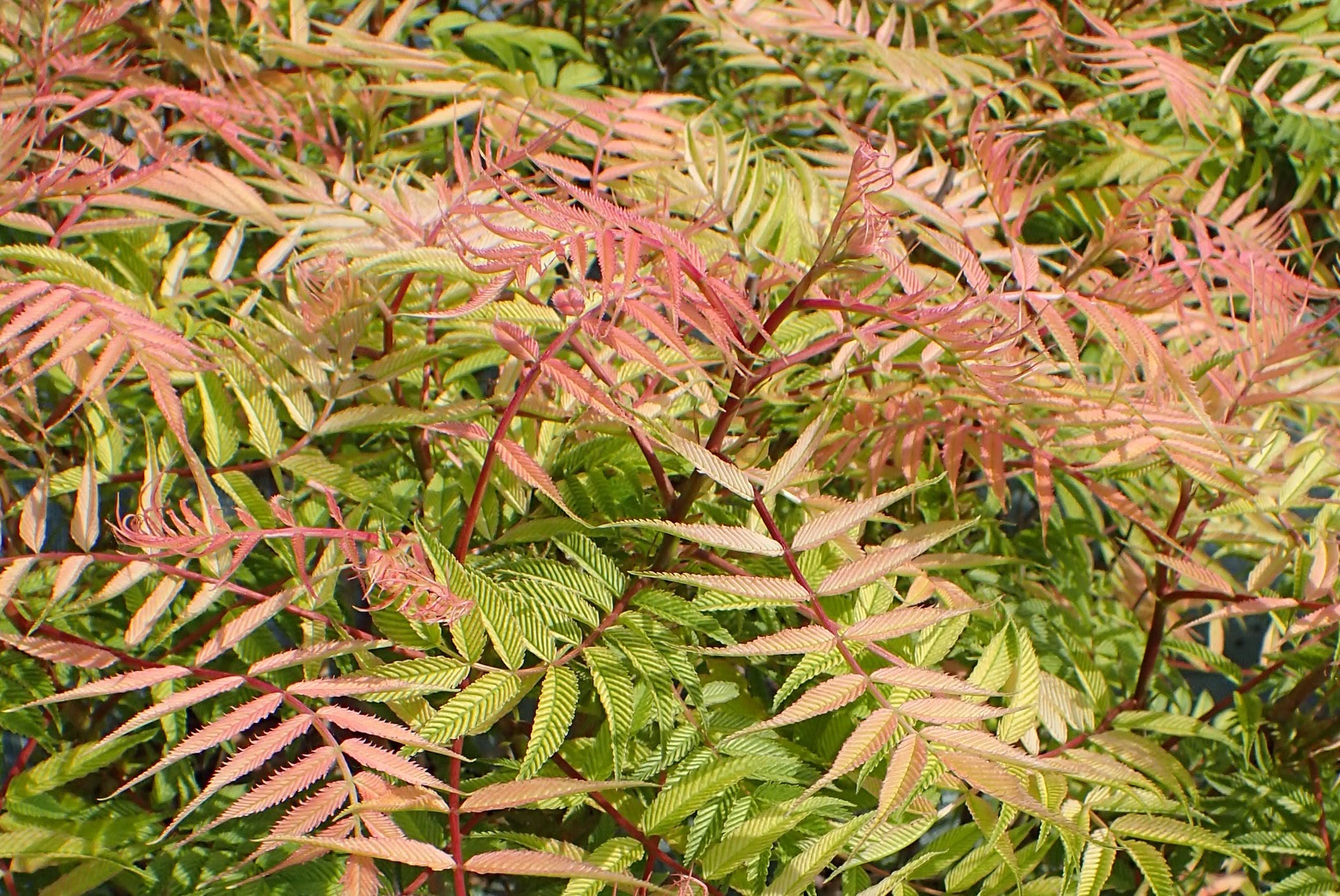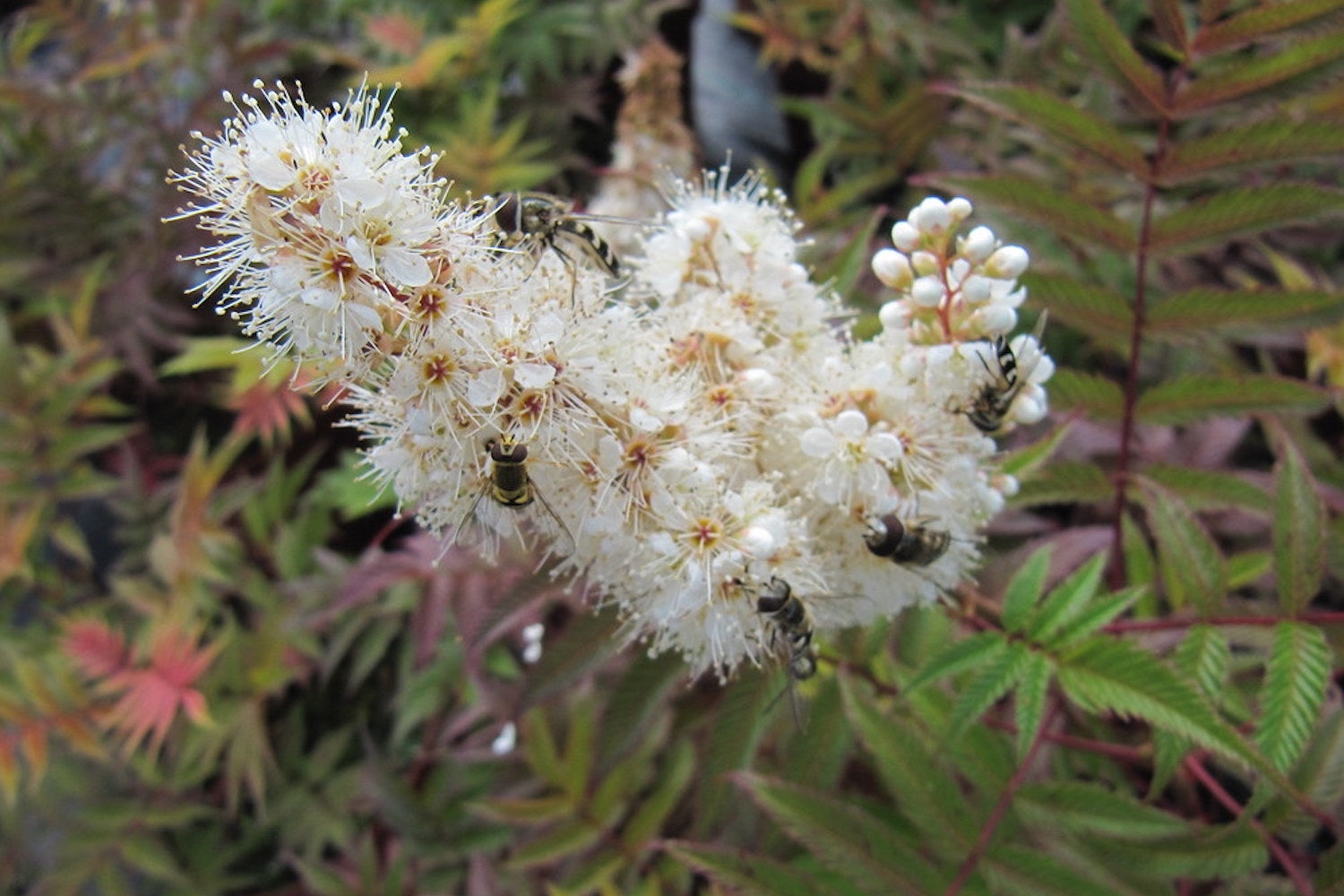Sorbaria sorbifolia 'Sem'
Approx. 0.5 litre pot
About this cultivar:
Sorbaria sorbifolia 'Sem' is a small, compact selection, of this thicket-forming shrub with a distinctive leaf colouring than changes through the season. The fun feathery foliage emerges yellow-green flushed with bright reddish-pink and bronze in spring. As summer arrives the leaves turn greener, then when winter arrives they turn red. Flowers are borne in stiff, erect, elegant cones of small white flowers in summer. These cones often dry out to create interesting structure over winter.
This plant behaves a bit like a herbaceous perennial - like Hydrangea 'Annabelle' you can cut it back very hard after dormancy (but you might want to leave it for the structure the seed heads provide over the winter months).
- Position: Full sun, partial shade
- Soil: Almost any soil, grows well in Ballyrobert
- Flowers: June, July, August
- Other features: Royal Horticultural Society Award of Garden Merit (RHS AGM), Grows well in Ballyrobert
- Hardiness: H5 - Hardy in most places throughout the UK even in severe winters (-15 to -10°C), Fully hardy - grows well in Ballyrobert!
- Habit: Clump forming, bushy
- Foliage: Deciduous
- Height: 120 - 150 cm (4 - 5 ft)
- Spread: 120 - 150 cm (4 - 5 ft)
- Time to full growth: 2 to 5 years
- Plant type: Herbaceous Perennial
- Colour: Green, white, red, yellow, pink
- Goes well with: -
About this genus:
Sorbaria is a genus of flowering plants belonging to the Rose (Rosaceae) family. The name is derived from the genus name of a related rose family member called Sorbus (mountain ash) in probable reference to the similarity of the leaves. The genus Sorbaria was first recognised as one of the species of the genus Spiraea by Carl Linnaeus in 1753, but was moved into a genus of its own in 1860 by Alexander Braun. This might explain the common name 'False Spiraea'.
It is a rather small genus, mainly distributed in temperate Asia, which consists of 2 to 10 species varying from small shrubs to large trees. The genus is deciduous, with odd-pinnate and stipulate leaves. Dry, I know, but the foliage looks a lot better than it sounds, especially in autumn. In summer they produce fluffy white or pink flowers on terminal panicles.
As you’d expect from the name growing conditions are similar to Sorbus (Mountain Ash), so will grow in most places that aren’t swamps or too hot or dry. They normally spread by suckers, but we don't grow (or sell) any that spread too aggressively. They do well in our wet soil. Most likely they will be grown as a small shrub or even herbaceous perennial. How to use? Easy, they have foliage appeal and flower appeal so are quite versatile anywhere!




